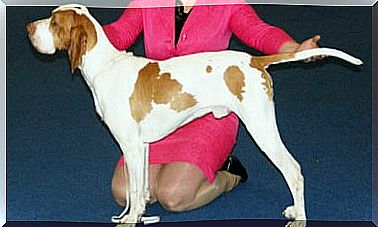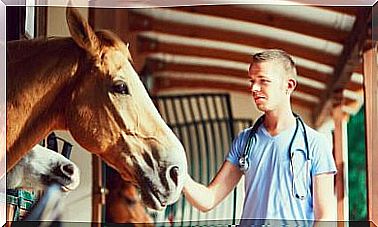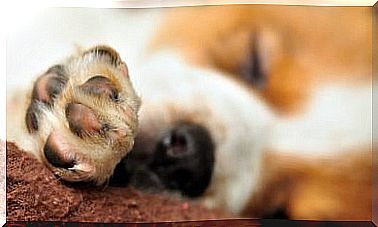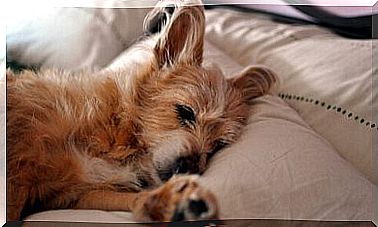Reasons Why A Dog Becomes Aggressive

Aggression in dogs is a problem we are all afraid of. Whether small or large, an aggressive dog is unpredictable and, in many cases, dangerous. In this article, we’ll talk about some of the most common reasons a dog becomes aggressive.
Why does a dog get aggressive?
Discovering the reasons for aggressiveness in dogs is essential to be able to think of measures to solve this behavior problem. The information that families give to canine educators and ethologists about the behavior and personality of their animals is fundamental.
However, treatment for aggressiveness must be diagnosed and implemented by a professional. This behavior problem is dangerous for the dog and for humans, so it is very important to look for a positive educator.
An untreated or poorly treated aggressiveness problem can make the problem worse. This not only increases the problem of living with the family, but it can also end up with some of the members being injured.
Fear
Fear is one of the fundamental reasons a dog becomes aggressive. Usually, the dog is exposed daily to something that it causes fear and which he can not escape. Therefore, if he discovers that, by acting aggressively, he is able to make that something disappear, he will do so.
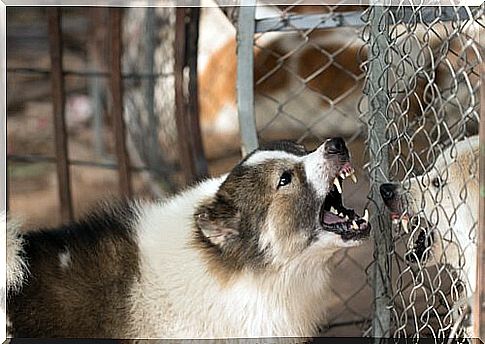
The first point to start treating aggression is to avoid, as far as possible, what produces fear: exposing the dog to this will only increase the problem. Changing the tour route or schedule will improve your reactions and your quality of life.
collar pulls
Humans and lead driving are often behind the unpleasant reactions dogs have. Many of the interactions dogs have with each other end up in dispute because one of them feels a tug on his neck that makes him overreact.
The collar is a very strong communication element. Through it, tranquility, haste or concern are transmitted. Any movement we make on our side of the lead reaches the dog, and the neck, which is a very sensitive area. Thus, we make him act aggressively without realizing it.
Also, there are some types of collars that cause problems in dogs. Skewer collars , for example, cause pain in animals. If every time a bicycle or a child appears, the metal spikes dig into the dog’s neck, he will start to move forward to ward off the pain before feeling it.
This relationship is one of the basic learning laws formulated by Pavlov and it is classical conditioning. To be able to undergo the treatment, it is essential to get rid of these types of collars that cause pain, and learn to use one that does not harm the animal.

Resource protection
We call resource protection the aggressiveness a dog shows to protect something it deems valuable or essential. Dogs that bark their teeth or growl when they’re eating often do this to protect their food, for example.
However, this is not just the case with food. The resting place, toys and even the family can trigger these reactions and, because of them, a dog becomes aggressive.
To begin treating this problem, the dog must understand that there is no point in protecting his food or his resting place. He will not be interrupted while sleeping and will always have ration in the pot. Trust is fundamental to overcoming this problem even though, like the rest of the causes listed in this text, the intervention of a competent educator is necessary.

pain or illness
Aggression in a dog may be hiding pain or discomfort. He manages to move away or avoid contact with other animals or humans so that they don’t touch him where it hurts. There are also cases of hormonal imbalances that have aggressive or very exaggerated reactions as symptoms.
Therefore, if a dog becomes aggressive, or has a radical change in behavior in a short period of time, it is necessary to visit a veterinarian to rule out a physical cause. Likewise, when you pass the 7-year barrier and begin to age, joint pain or hip dysplasia may appear .
Only a veterinarian can diagnose a physical cause for aggression and propose a treatment to make the malaise disappear. An educator can help restore the dog’s confidence so it doesn’t overreact, but this problem can only be resolved with a veterinarian.
Aggression in dogs is a problem that concerns us a lot as a society. Every dog has a different reason, and without knowing it you can’t start a treatment to solve it. Contact an educator or veterinarian to get your pet’s behavior back to normal.
